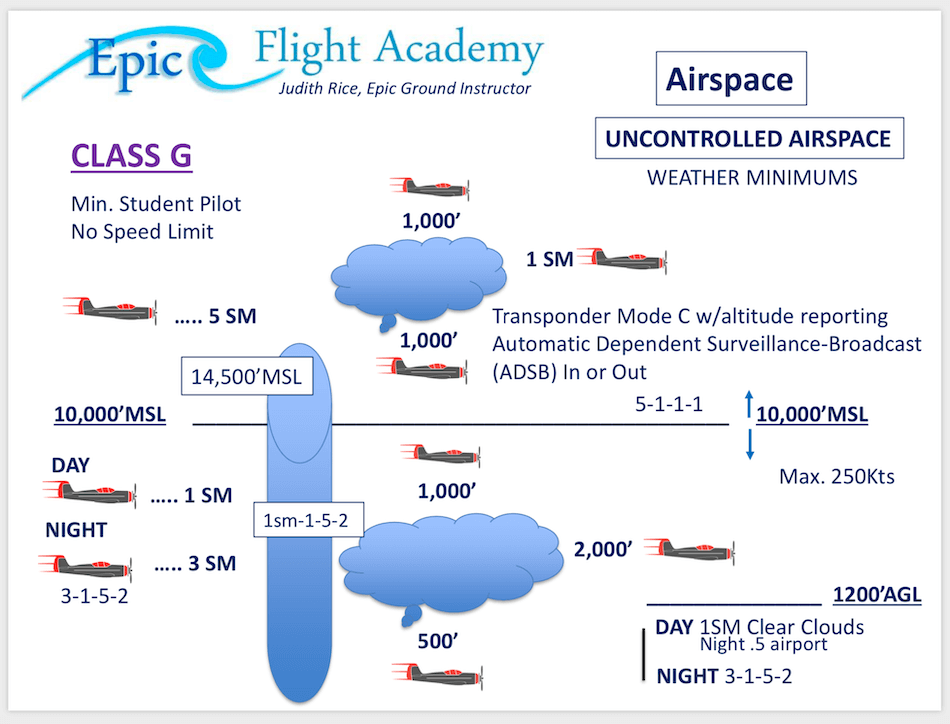class g airspace canada
Cloud clearance minimums of 1000 feet above 1000 feet below and 2000 feet horizontally. However pilots are required to meet IFR altitude and flight level requirements.

This Is How Class G Airspace Works Boldmethod
For more details on the airspace structure and classification please refer to Division I of Subpart 601 of the Canadian Aviation Regulations CARs Airspace Structure Classification.
. Much of Class G airspace in. Class G airspace is all airspace that is not another classification. Class A airspace Class A airspace is designated where an operational need exists to exclude VFR aircraft.
IFR and VFR permitted. Class G is your uncontrolled airspace. Yes it is possible to fly IFR in Class G airspace.
Like Class E airspace you can fly through Class G airspace at airports the terminal environment and while en-route. Class G airspace is not specifically shown on aviation charts. CDAH - Canadian Designated Airspace Handbook Class A-G - Airspace in Canada is divided into 7 classes.
Show only when airspace is. Rules governing VFR flight have been adopted to assist the pilot in meeting the responsibility to see and avoid other aircraft. It is what we call open airspace.
From the supplement Class E All high level controlled airspace above FL600 within the SCA NCA and ACA. Here is what to know. What Is Class G Airspace.
Google Maps Viewer for Canadian Airspace. Both IFR in IMC conditions and VFR traffic may operate in Class G. Airspace is managed by Transport Canada and detailed information regarding exact dimensions and classification is available in the Designated.
These procedures are published in the Canada Flight Supplement. Special Use and Other Airspace Classes Special Use Airspace SUA is a designated area in which activities must be confined because of their nature where limitations. Also low level airways low level fixed RNAV routes CAEs transition areas or CZs established without an operating control tower may be classified Class E airspace So uncontrolled airports like Sarnia CYZR an.
10000 feet MSL or higher. First rule re Class G in Canada is that ATC does not provide is not permitted to provide control service in Class G so you will not receive a clearance into or through even if. 14 rows Class G airspace will always start at the ground and go up to 14500 msl as a maximum.
Some control zones have unique procedures because of terrain or air traffic demands. However Class G airspace. Any airspace not specifically identified as controlled airspace on a chart is Class G airspace.
Class G airspace uncontrolled is that portion of airspace that has not been designated as Class A Class B Class C Class D or Class E airspace. The weather minimums in Class G airspace vary based on altitude whether it is day or night and proximity to an airport. Minimum flight visibility and distance from clouds.
Any airspace that is not designated as A B C D E or F is Class G airspace. Classes A through E are controlled though in Class E there are no special requirements for VFR traffic except that. Forbidden or advisory airspace.
Airspace not designated A B C D or F within which ATC has no authority or responsibility. This is the airspace. Class G is always uncontrolled.
Above 1200 feet AGL but below 10000 feet MSL during the day. Other types of airspace have special classifications that tell us what they are. ATC provides separation for IFR aircraft.
The reason we put that in bold is because it is likely to appear on your written exam. Drone pilots with a Basic Drone Pilot Certificate must stay in Class G. Though it may not seem like it Class G is most of Canadas airspace.
Class F Class G Fig 7-2 Canadian Airspace Structure. Controlled low-level airspace A Controlled high-level airspace E Control zone for airports without towers E Low-level airways G F Uncontrolled airspace Restricted airspace. ATC provides separation for IFR aircraft only.
While theres no one to coordinate with for airspace. Does not fit into any of the other airspace categories and ATC has neither the responsability nor obligation to manage traffic. IFR and VFR permitted.
Can you fly IFR in Class G airspace.
Airspace Classes Explained Bobbie Lind

Just Want Clarification On Flying In Class E Airspace Does This Airspace Start At 700ft Agl So Flying From The Ground To 400ft Agl Is Considered Class G And Fine Without Permission

Things I Ve Seen Vol 2 Canadian Airspace

Airspace Classes And Special Use Airspace Everything There Is To Know

Canadian Airspace Classes Coastal Drone

Flight Safety Checks Everything You Should Know Before You Takeoff Aerial Evolution Association Of Canada

Canadian Airspace Classes Coastal Drone

Airspace Classes Explained The Ultimate Guide For Beginners
Class E Airspace The Logic Behind It Guide Pilotmall Com

How To Identify Airspace For Drone Operations Candrone

Canadian Airspace Classes Coastal Drone

Canadian Airspace Classes Coastal Drone

Canadian Airspace Classes Coastal Drone

Airspace Classification Ama In Action Advocating For Members

Canadian Airspace Classes Coastal Drone

This Is How Class G Airspace Works Boldmethod

Canadian Aviation News Executive Flight News Vintage Etsy Canada Aviation News Flight News Aviation

